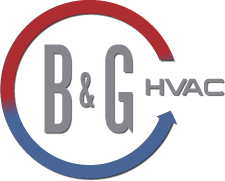
A furnace is almost always a background player at home, keeping you warm in the cold winter months. It frequently doesn’t get noticed until something breaks down.
One root cause could be that your furnace has a cracked heat exchanger. It can be a safety risk, so it’s worthwhile to know the evidence of a cracked heat exchanger and what to do if you are worried that may be the problem.
What Is a Heat Exchanger in a Furnace?
A heat exchanger transfers heat from the combustion chamber of your furnace to the air that circulates through the ventilation. It usually handles this with coils or tubes that warm the air while acting as a barrier to keep the gasses produced in the combustion chamber, called flue gasses, from leaking out into your home.
Is a Cracked Heat Exchanger Dangerous?
Given its key role, it shouldn't come as a surprise that a damaged heat exchanger can be very dangerous. Cracks in the heat exchanger can allow dangerous gasses – such as carbon monoxide, which can be lethal – to flow across your home.
For obvious reasons, do NOT turn on your heating if you suspect you're dealing with a cracked heat exchanger, as letting it run could make the whole household ill. Reach out to an HVAC professional immediately if you think your heating has a cracked heat exchanger that needs repair.
Four Warning Signs of a Cracked Heat Exchanger:
- Furnace switches off: Cracks in the heat exchanger could cause your furnace to shut off.
- Odd Smells: If the air leaving your furnace has a strong chemical odor, it may be a sign gasses are slipping through cracks in your heat exchanger. These byproducts, which may smell like formaldehyde, are a significant warning sign.
- Carbon monoxide alarm initiates or you feel poisoning symptoms: If a cracked heat exchanger is relieving carbon monoxide in your home, your carbon monoxide alarm should go off or household members could experience signs of carbon monoxide poisoning. Side effects include headaches, dizziness, weakness, nausea, vomiting or feeling sleepy. If an alarm goes off or you feel sick, exit the home as soon as you can and then call for help.
- Soot: If you see black sooty collecting near the exterior of your furnace, it’s more evidence something may be seriously wrong.
What You Can Do if the Furnace Heat Exchanger is Cracked
If you worry your furnace has a cracked heat exchanger, contact a pro experienced in furnace installation Marshalltown right away so they can inspect your system and, if necessary, handle a furnace heat exchanger replacement. Costs often differ depending on the situation, but estimates run in the neighborhood of $1,000 to $3,000.
Estimates aside, the good news is that heat exchangers are regularly protected by the warranty. You should check the warranty paperwork on your furnace, because while the warranty might not cover the entire cost of repairs, it can significantly shrink your bill.
How to Avoid a Cracked Heat Exchanger in Your Home
One of the most convenient ways to minimize the risk of problems in your furnace overall is through routine furnace maintenance. Furnaces offer the most benefits when they run efficiently. Contacting a certified professional to examine your furnace for worn-out parts, clogs in the air filters and other potential problems can keep you from getting a big bill later on.
It’s also a good idea to inspect your furnace filters every few months – it’s recommended some filters be changed every 90 days or sooner if they are dirty or grimy. While the filters are not part of the heat exchanger itself, the strain of pulling air through a clogged filter makes the entire furnace work harder to do its job. And the harder your furnace needs to run, the more strain components like the heat exchanger will experience.


